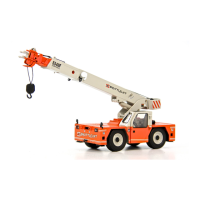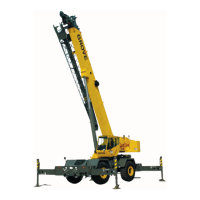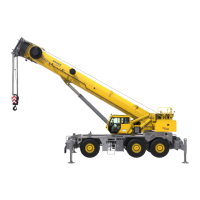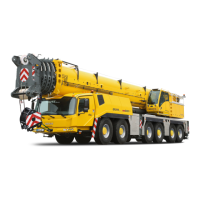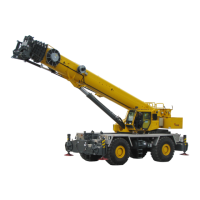GROVE 5-19
CD3340B/YB4411 MAINTENANCE
Published 04/07/2015 Control # 569-00
The boom retract chain is lubricated through the access
holes in the boom. Align the holes to expose sections of the
boom chain. Each section must be lubricated as directed
below.
NOTE: Use a good grade of spray chain lubricant. If none
is available, use preheated oil (15° to 37°C [60° to
100°F]) to provide a better penetration of oil to the
chain joints.
Apply ample lubricant to each pin, between the inner and
outer side plates and between the inner side plates and
roller. DO NOT, under any circumstances apply grease
lubricant to the chain. Grease will not penetrate to the pin
bearings. Lack of lubricant in the pin bearings is usually
indicated by squealing or groaning sounds when the boom is
extended or retracted.
NOTE: Under normal operating conditions, especially in
dusty environments, lubricated chains will
accumulate a paste-like buildup of grime. This
buildup should never be permitted to accumulate
sufficiently to seal off the clearances, thereby
restricting the lubricant to the bearing surfaces.
Whenever the buildup is excessive, the buildup
must be removed by cleaning and the chain
immediately lubricated. DO NOT steam clean or
use degreasers; use a suitable solvent.
100 Hours of Operation
NOTE: You must read and understand the warnings and
basic safety rules, found in Section 1 of this
manual, before performing any operation or
maintenance procedures.
For additional engine maintenance guidelines, see
the engine manual furnished with this crane.
Check Wheel Nut Torque
Check the torque on the wheel nuts in a crisscross pattern.
Wheel torque should be 225 lb-ft (302Nm).
Inspect the Fan Belts
Keep the engine and accessory belts properly tensioned for
maximum engine performance and fuel economy. Proper
belt tension minimizes slippage and increases belt life.
Belts that are too loose see excessive vibration and
increased wear. Belts that are too tight produce wear on the
belts and the bearings of the pulleys it travels around.
Check ribbed belts for intersecting cracks. Cracks across the
belt are acceptable. Cracks along the length of a ribbed belt
are not acceptable. Ribbed belts with cracks along their
length or intersecting cracks should be replaced. See
Figure 5-31.
a0019
FIGURE 5-31
Replace
Belt
Lengthwise Cracks, Intersecting
Cracks, or Belt Damage NOT OK.
Cracks Across
Width OK
Reference Only
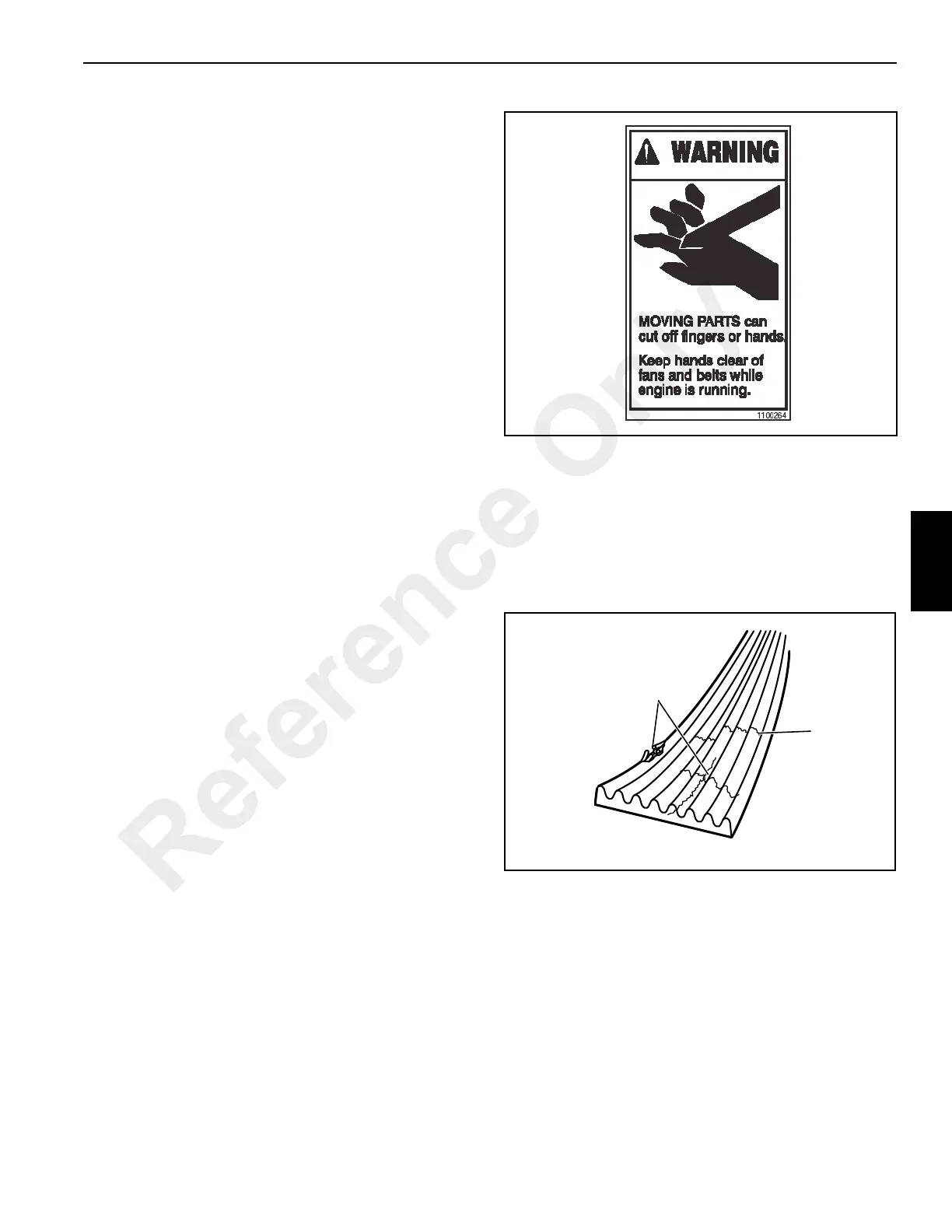